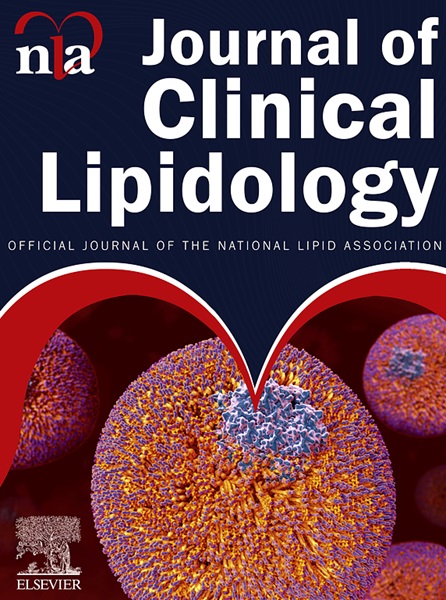Implementation of a machine learning model and direct-to-patient outreach program for targeted screening for familial hypercholesterolemia
IF 4.6
3区 医学
Q2 PHARMACOLOGY & PHARMACY
引用次数: 0
Abstract
OBJECTIVES
Heterozygous familial hypercholesterolemia (FH) is underdiagnosed. This program evaluated the impact of implementing a machine learning model (MLM), expert chart review and clinical consultation in the diagnosis of FH.
METHODS
Flag, Identify, Network and Deliver FH (FIND-FH) was applied to 147,412 unique patient records in the Dartmouth Health system and identified 388 adult patients at risk for FH. Lipidologists and cardiologists performed chart reviews using FH clinical criteria. Patients were excluded from outreach if they had an established diagnosis of FH, a lipidologist, insufficient information to suspect FH, a low likelihood of FH, moved, died, or had alternative medical priorities at the time of review.
RESULTS
Among 388 flagged patients, median age was 50 years (IQR: 39-59 years), 43% were female, and 88% self-identified as white. After expert review, 208 (54%) patients were removed from outreach for meeting exclusion criteria. The majority of those excluded had a low likelihood of having FH (115/208, 55%). The median low-density lipoprotein cholesterol (LDL-C) in excluded patients was 134 mg/dL (IQR: 102-154 mg/dL) compared to 172 mg/dL (IQR: 132-216 mg/dL) in patients selected for outreach. A high-touch, direct-to-patient outreach process yielded 72 clinical visits (19%) and 58 new diagnoses of possible/probable/definite FH (15%).
CONCLUSION
The Find-FH MLM flagged 388 individuals as “at risk” for FH of whom 58 (15%) ultimately received a diagnosis of possible/probable/definite FH. While this represents a substantial improvement on 1:250 (0.4%) expected when screening the general population, it was labor intensive. For scalability, improved accuracy of the MLM and efficiency of chart review and outreach are needed.
实施机器学习模型和直接面向患者的外展计划,用于家族性高胆固醇血症的靶向筛查。
目的:杂合子家族性高胆固醇血症(FH)的诊断不足。该项目评估了在FH诊断中实施机器学习模型(MLM)、专家图表审查和临床咨询的影响。方法:将Flag Identify Network and Deliver FH (FIND-FH)应用于达特茅斯卫生系统(Dartmouth Health system)的147,412例独特患者记录,识别出388例有FH风险的成年患者。脂质学家和心脏病学家使用FH临床标准进行图表回顾。如果患者有明确的FH诊断,血脂学家,怀疑FH的信息不足,FH可能性低,搬家,死亡或在审查时有其他医疗优先事项,则排除在外诊范围之外。结果:在388例被标记的患者中,中位年龄为50岁(IQR: 39-59岁),43%为女性,88%自认为是白人。经专家评审,208例(54%)患者因符合排除标准而退出外展。大多数被排除在外的人患FH的可能性很低(115/ 208,55%)。排除患者的中位低密度脂蛋白胆固醇(LDL-C)为134 mg/dL (IQR: 102-154 mg/dL),而选择外扩患者的中位低密度脂蛋白胆固醇(LDL-C)为172 mg/dL (IQR: 132-216 mg/dL)。高度接触、直接面向患者的外展过程产生了72例临床就诊(19%)和58例可能/可能/明确的FH新诊断(15%)。结论:Find-FH MLM将388人标记为FH“有风险”,其中58人(15%)最终被诊断为可能/可能/明确的FH。虽然这代表了在筛查普通人群时预期的1:250(0.4%)的大幅改进,但这是劳动密集型的。为了提高可扩展性,需要提高传销的准确性和图表审查和外展的效率。
本文章由计算机程序翻译,如有差异,请以英文原文为准。
求助全文
约1分钟内获得全文
求助全文
来源期刊
CiteScore
7.00
自引率
6.80%
发文量
209
审稿时长
49 days
期刊介绍:
Because the scope of clinical lipidology is broad, the topics addressed by the Journal are equally diverse. Typical articles explore lipidology as it is practiced in the treatment setting, recent developments in pharmacological research, reports of treatment and trials, case studies, the impact of lifestyle modification, and similar academic material of interest to the practitioner.
Sections of Journal of clinical lipidology will address pioneering studies and the clinicians who conduct them, case studies, ethical standards and conduct, professional guidance such as ATP and NCEP, editorial commentary, letters from readers, National Lipid Association (NLA) news and upcoming event information, as well as abstracts from the NLA annual scientific sessions and the scientific forums held by its chapters, when appropriate.

 求助内容:
求助内容: 应助结果提醒方式:
应助结果提醒方式:


